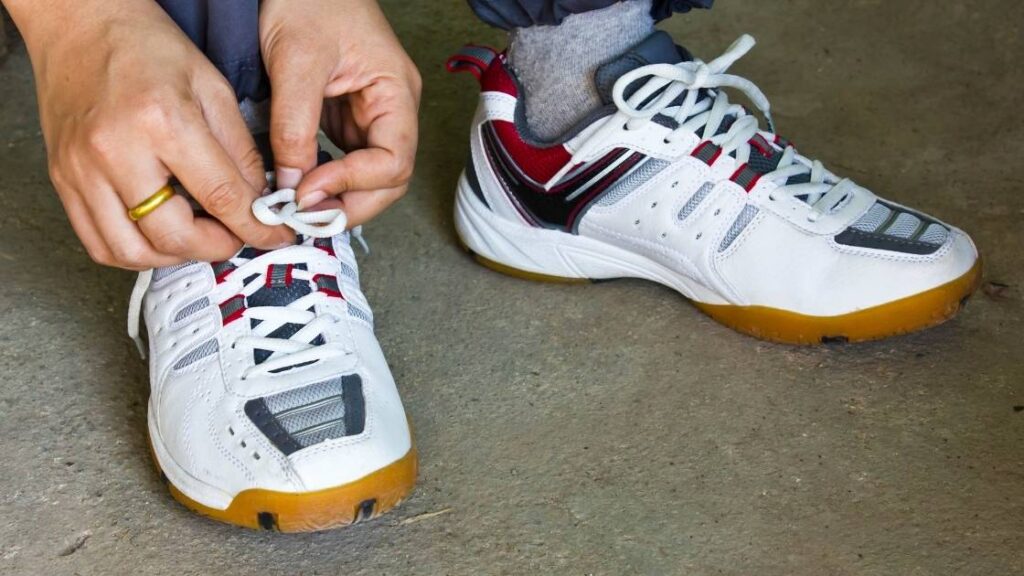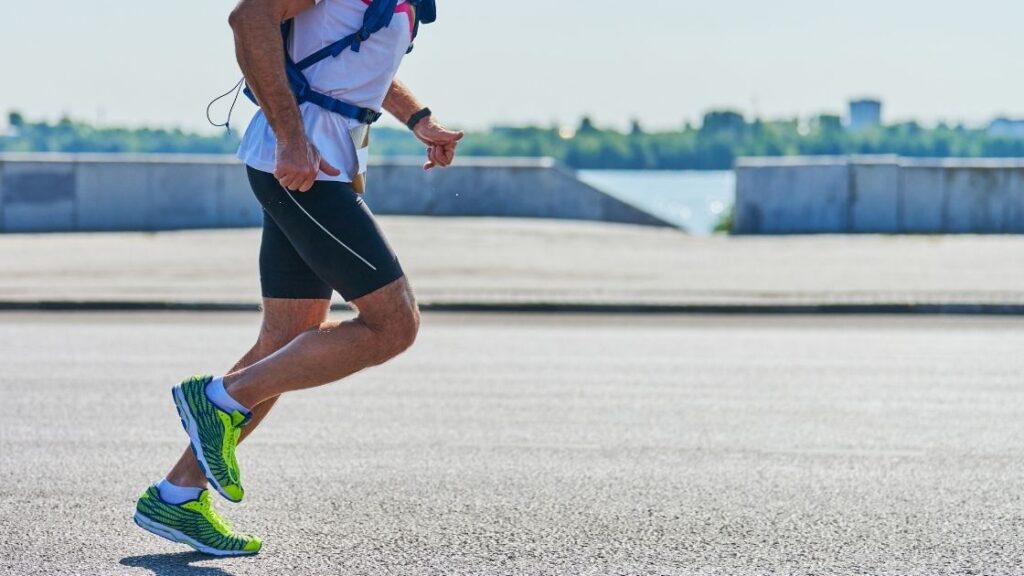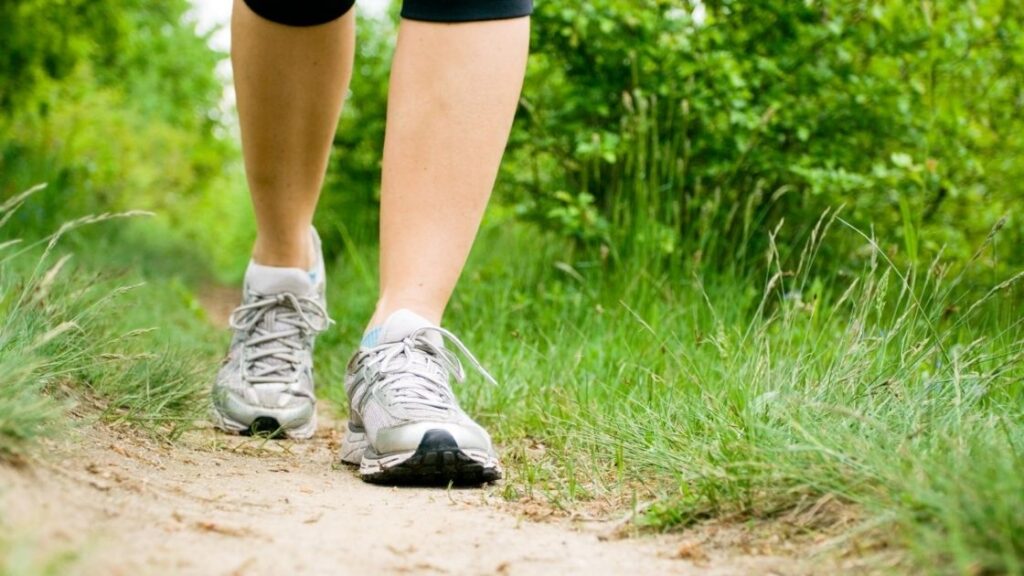Update: 14-07-22
Want to start running? Haven’t exercised in years? Returning after an injury? Looking for some (actually helpful) tips for new runners? Even if you have no running experience, no sweat, we’ve created this handy guide for newbies just like you!
We know that starting any new sport can seem daunting, and running is no exception. That’s why we’ve broken down everything you need to know about getting started in this fantastic sport. From choosing your first pair of running shoes to getting you ready for race day, we’re here to share out top 12 essential tips for beginner runners, so you’ll be laced up and ready to run-able!
Why Should I Start Running?
Running is an honestly wonderful sport with many health benefits, both physical and mental. It’ll help keep you in shape, lower your stress levels, and more. There’s a reason why people become addicted!
So why should you start running? Take your pick!
- You need very little equipment and preparation
- It’s fantastic for your cardiac health
- Running will help strengthen bones and prevent osteoporosis
- It’s perfect for increasing lean muscle tone
- Running can help you keep your weight under control
- Running will reduce your likelihood of developing illnesses like diabetes
- You can run indoors or outdoors, 365 days of the year
- It releases endorphins and helps to boost your mood
- Running improves your overall energy levels
- Running is fun!
Just to name a few! If you are looking for these benefits and more, it’s time to dive into our top tips for beginners!
Tips for New Runners
1. Protect your feet
One of the most important things you can do is protect your feet. And by that we mean, it’s time to invest in a good pair of running shoes. Now that doesn’t mean an expensive pair of brand-name sneakers.
What you are looking for is light, supportive running shoes. The right shoe will have a thick heel to help absorb impact and reduce the pressure on the rest of your body. Look for a pair that will support your ankle to help prevent injuries like twists and sprains.

It’s well worth investing in some good running sinkers for more ways than one, and you’ll notice the difference in your posture and your step immediately. Spending money on a proper running shoe can seem scary for a beginner runner but remember – you are investing in your health.
2. Wear Proper Clothing
Similarly, it’s essential to wear proper clothing when doing any workout. Let’s break down what running gear you will need.

- T-shirt – Shirt or top, long-sleeved or short, who are we to tell you what’s best? Just choose lightweight, breathable fabrics that are designed for sports. As long as it’s comfortable, you are good to go!
- Sports bra – Make sure you choose a supportive (but not too tight!) activewear bra. Exercising in regular bras is far more uncomfortable and can lead to back pain.
- Socks – Socks designed for running are thick around the heel and toes. While it may sound like a gimmick (what’s the difference between two pairs of socks, right?) It is important to wear supportive socks to protect your feet from the impact of running and the friction caused by running shoes.
- Hat – No hat, no play! Don’t forget to wear a hat whenever you spend prolonged periods in the sun. Even caps prevent premature aging and will help fight against skin cancer.
3. Learn the Basics
Do you already know how to run? Chances are you don’t. To reduce your chance of getting a running injury, it’s super important that you start on the right foot by learning how to run correctly. So, start your run. Many runners do not know the basics and get injured. These tips help you ready to run 5k steps a day easily. Every runner should maintain these tips.

Check out some videos, or you can even find a specialized running coach who will help you achieve excellent running form. The basics are:
- Arms should be bent and facing the direction you are going
- Head and chest should be upright and facing forward
- Feet should be facing forward and in line with shoulders
- Run from midfoot to toe and keep your knees high
- Lean slightly forward as you run.
- Take a walk break after a certain period.
- Stay Hydrate. Hydration is very important.
4. Warmup Properly
It is a cliche but one that rings true. You should spend at least five minutes warming up properly before beginning your training. Warming up stretches your muscles and helps get your heart rate pumping. Try a combination of the following:
Static stretches are the stretches you probably remember from grade school. They involve moving a muscle into a specific position and holding it there for about 30-45 seconds, like when you bend over and try to touch your toes. It’s a great way to warm up, and regular stretching will help improve your flexibility.
Don’t forget to warm up your shoulders, back, and neck as well as upper and lower legs. Just remember! Stretching should never be painful! Don’t ever try to force a stretch, as this can lead to long-term damage.

Dynamic Stretches – These stretches warm up the muscles by actively putting a specific muscle through a complete movement. Things like leg kicks, trunk twists, lunges – even jumping jacks are great dynamic stretches. Check out “Dynamic Stretches for running” on Youtube. There are many great videos with great tips for runners like you!
5. Start with a Walk
We have to crawl before we can walk, and we have to walk before we can run. If you haven’t exercised in a while, it’s going to put a bit of stress on your body when you first start moving. Instead of diving straight into a half marathon, it’s always better to take things slowly.

We recommend starting your training plan by simply walking! Walking is a low-impact exercise that is great for your health. It’ll help build muscle mass, and gentle walking even helps strengthen bones. This means a few weeks of walking will gently prepare your body for the strain of running and help keep you injury-free.
6. Progress Gradually
Now that we’ve taken the first step, it’s essential to progress gradually. One of the best beginner running tips is simply making the transition from walking to running slowly, as well as at your own pace.

Start by increasing the intensity of your walk until you get to what you’d call a power walk or fast walk. Then you might like to start with a light jog every second session until you are confident with jogging at a leisurely pace. Here’s a rough plan to give you an idea of what we’re talking about:
- Week 1 – 2: Day 1, 2, 3 & 4 Gentle walk
- Week 3 – 4: Day 1 & 3 Fast walk, Day 2 & 4 Gentle walk
- Week 5- 6: Day 1, 2, 3 & 4 Gentle walk
- Week 7-8: Day 1 & 3 Running at a leisurely pace, Day 2 & 4 Fast walk
- Week 9 – 10: Day 1, 2, 3 & 4 Running at a leisurely pace
It may seem slow, but remember that health is a marathon, not a sprint. It’s much more essential to take your time laying the foundations of muscle mass and health than it is to jump right in at the deep end and struggle.
Also, don’t forget to give yourself time to heal! Having a rest day is super important as it will give your muscles time to recover, especially for beginner runners.
7. Increase your Speed and Intensity
After you’ve started regularly running at a leisurely pace, the time has come for some new challenges. Depending on your goals, you may want to either start increasing your speed or increasing your distance. Here are some ideas for each to make yourself an efficient runner.
The need for speed
If you are looking to focus on sprints, short runs, or just love the feeling of wind in your hair, then you might like to start stepping up the pace. You’ll need to invest in a decent stopwatch, or you can, of course, use your smartphone to do the job as well. Just avoid checking the clock until you get to the finish line!

We recommend keeping track of your speeds in a notebook or diary. There’s also a great range of apps that can record everything digitally. Just remember, you should naturally start getting faster as your fitness increases and never push yourself past your limits!
No matter what the inspirational T-Shirts say, there’s no point falling over and ending up with a twisted ankle just because you wanted to shave off a couple of seconds from your best score.
Go the Distance
If marathons or long-distance running is more of your thing, then it’s time to start going the extra mile! Once you are comfortable with your current mileage, it’s time to start stepping things up. You might have heard about the “10% Golden Rule”.
This pretty much means that you should only increase your weekly mileage by 10% from week to week to stay safe. For example, if in week one you run 20 miles, you should only increase to 22 next week.
This rule might be a good rule of thumb for the experienced runner but it’s not the best tip for runners. For beginners, jumping 10% of your weekly mileage every single week just isn’t healthy, Nor is it sustainable.
If you want to try a longer distance. We recommend increasing your mileage by 5-10% but then keeping it there for about a month before your next increase. Remember, you are chasing health – not a number!
8. Add in Strength Training
If you’re serious about running, then it’s time to think about adding some strength training into your running program. Strength training is great for you as it will:

- Build muscles
- Strengthen connective tissues
- Improve coordination
- Increase heart health
- Reduce injury risk
Beginners should keep up a regular strength-building workout session about once per week. Things like squats and weights are great ways to increase your strength, without needing to invest in a ton of exercise equipment or a new gym membership.
9. Cool Down Properly
One of the best running tips for beginners, and something people always forget to mention is the importance of cooling down properly after your run. Just like warming up, this prevents muscle tears and will also allow your heart rate a chance to get back to normal gradually.

It’s good to spend a few minutes after each run doing some sort of cool-down activity -like stretching out for about 10 minutes afterward. You can even just try decreasing your speed. Go from running to walking for a few minutes before coming to a complete stop.
10. Watch out for Injuries
Any beginning runner will need to be extremely careful to watch out for injuries. The repetitive impact of running can be devastating to knees, legs, and feet – which is why it’s so important to take things slowly. No one wants to end an afternoon run with a trip to the physical therapist the next morning!

Never force yourself through a run and if you are in pain or discomfort – stop immediately. This is also why personal trainers will tell you to warm up and cool down properly before running. Remember our tips – if you don’t have time to warm up then you don’t have time to go for a run! Warmup reduces the risk of injury.
If you are recovering from an injury, take it easy. Even if you just stop running for 2 weeks, you are not going to be able to go back to the same level of mileage as before. Try building up your muscles with some strength exercises, and don’t just throw yourself in at the deep end. It makes much more sense to go gradually rather than run the risk of long-term damage.
If you do experience pain or injury, remember to stop running immediately, and seek medical advice as soon as you can.
11. Set a Goal ahead of You
We are all different, but setting both long and short-term goals is super important to keep yourself motivated. Whether you are simply trying to run your first mile, increase your fitness, or are interested in marathon training, it’s so important to remember why you are doing this in the first place.
But remember, it’s all personal. We all have different goals, and just because your colleague might be preparing themselves for a marathon, it doesn’t mean that reaching your first 3 miles is any less of an achievement. Fitness is a journey and we are all at different points. Only compare you to yourself! Make your own running habit and stay healthy.
12. Never Stop Learning
As a runner, it’s important to keep up with changing methods and develop new skills. Sports medicine is constantly improving and coaches and trainers shape and adapt their training plans over time.
You can do the same, and there are countless guides, calculators and available all of which can help you in your running journey. You may also like to find a running buddy to share tips, ideas, and motivation. A running club is a great way to get to know other runners. Check out your local gym or sports club, they usually have a lot of information about your local running group.
Conclusion
Congratulations, you’ve reached the finish line! We hope this guide has left you with everything you need to know to hit the track running. Remember, running should be fun! Following these beginner running tips is the best way to make this lifestyle sports work for you too! So, who’s ready to go for a run? Ok, You can also bookmark this page for reading later also.

Rosily Ryan is an accomplished health and fitness writer, editor, and health activist based in Sydney, Australia. With a wealth of knowledge and expertise in the health and nutrition industry, Rosily has established herself as a trusted authority in the field. She has contributed to several leading publications, including Pure Green Magazine, where her work has been widely recognized for its insightful analysis and engaging style.
Rosily’s passion for health and fitness is evident in her writing. Her extensive research and first-hand experience in the field allow her to provide valuable insights and practical advice to her readers. As an advocate for healthy living, Rosily has been actively involved in various health initiatives and campaigns that aim to raise awareness about the importance of physical and mental well-being.









